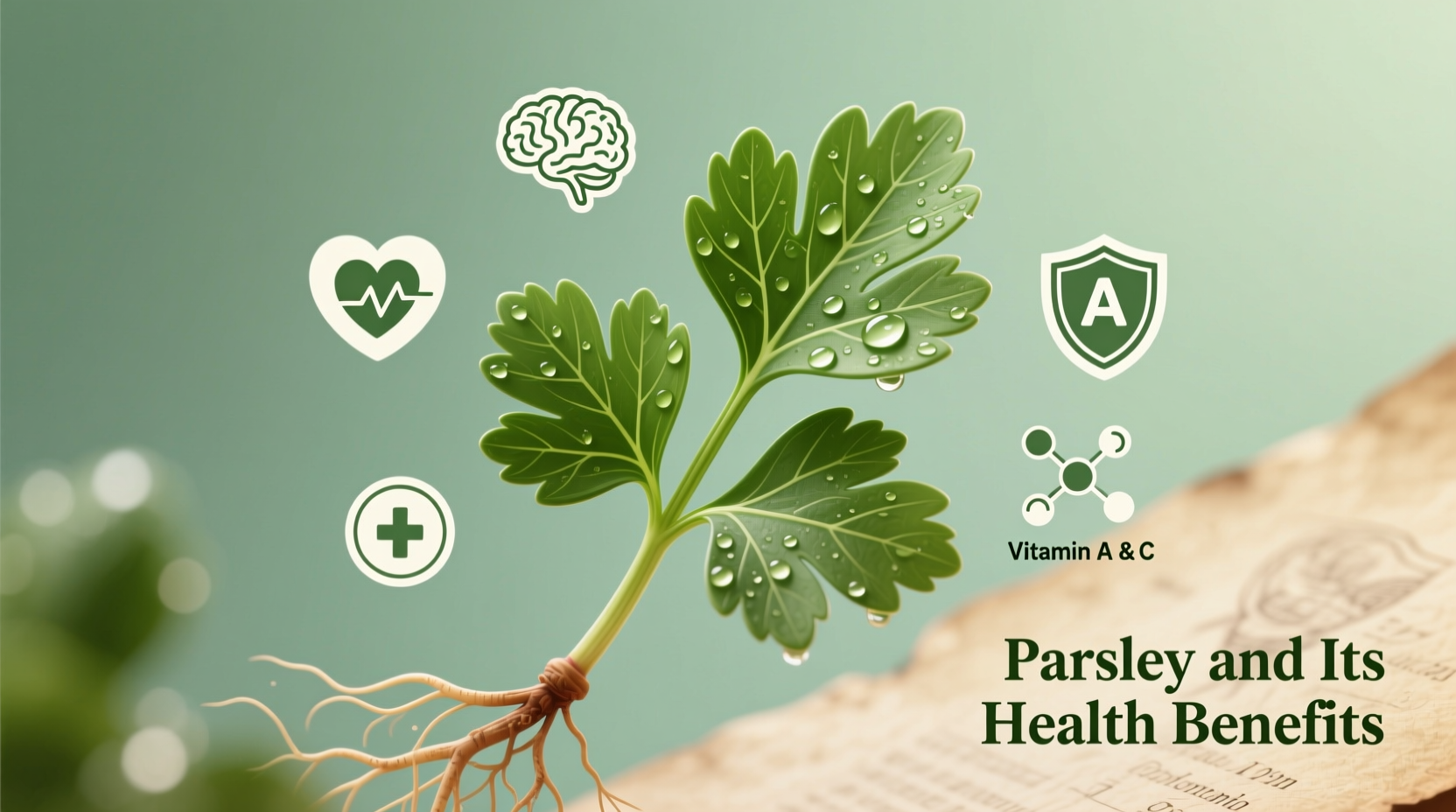Parsley delivers significant health benefits as a nutrient-dense herb rich in vitamins K, C, and A, plus powerful antioxidants like flavonoids and carotenoids. Scientific research confirms its potential to support heart health, reduce inflammation, strengthen bones, and provide natural detoxification properties when consumed as part of a balanced diet.
When you reach for that sprig of parsley as a plate garnish, you're overlooking one of nature's most potent nutritional powerhouses. This unassuming herb contains concentrated levels of essential nutrients that deliver measurable health advantages far beyond mere decoration. Understanding what are the health benefits of parsley reveals why culinary traditions worldwide have valued this herb for centuries beyond just visual appeal.
What Makes Parsley a Nutritional Standout
Unlike many herbs used primarily for flavor, parsley packs an extraordinary nutritional density. Just one-quarter cup (about 30g) of fresh parsley delivers:
| Nutrient | Amount per 30g | Daily Value % |
|---|---|---|
| Vitamin K | 246 mcg | 205% |
| Vitamin C | 22 mg | 24% |
| Vitamin A | 842 IU | 17% |
| Folate | 31 mcg | 8% |
| Iron | 1.1 mg | 6% |
This impressive parsley nutritional value per 100g profile explains why nutritionists increasingly recommend incorporating more fresh herbs into daily meals. The vitamin K content alone exceeds daily requirements, making parsley particularly valuable for bone health and blood clotting functions.
Science-Backed Health Benefits of Parsley
Cardiovascular Protection Through Multiple Pathways
Research published in the Journal of Agricultural and Food Chemistry demonstrates that parsley's high concentration of flavonoids, particularly apigenin, helps reduce oxidative stress in blood vessels. The herb's natural compounds work synergistically to:
- Lower homocysteine levels (a risk factor for heart disease)
- Improve endothelial function
- Support healthy blood pressure through potassium content
Bone Health Enhancement Beyond Calcium
While calcium gets most attention for bone health, vitamin K plays an equally crucial role in bone mineralization. According to the National Institutes of Health (NIH), adequate vitamin K intake correlates with reduced fracture risk and improved bone density. NIH research confirms that vitamin K activates osteocalcin, the protein that binds calcium to bones.
Natural Detoxification Support
Parsley contains compounds that stimulate kidney function and promote urine production. A 2012 study in Phytotherapy Research found that parsley extract significantly increased urine output while maintaining electrolyte balance. This natural diuretic effect helps flush toxins without depleting essential minerals.
Antioxidant Powerhouse Against Cellular Damage
With an ORAC (Oxygen Radical Absorbance Capacity) value of 1,432 μmol TE per 100g, parsley ranks among the most antioxidant-rich herbs. These compounds combat free radicals that contribute to chronic inflammation and cellular damage. The combination of vitamin C, beta-carotene, and flavonoids creates a protective effect throughout the body.

Practical Consumption Guidelines
Understanding how much parsley should I eat daily helps maximize benefits while avoiding potential issues. Registered dietitians recommend:
- Optimal daily intake: 1/4 to 1/2 cup chopped fresh parsley
- Culinary applications: Add to salads, smoothies, soups, and sauces
- Preservation tip: Store in water like flowers to maintain freshness for up to one week
Important Context Boundaries and Limitations
While parsley offers numerous benefits, certain populations should exercise caution:
| Population | Consideration | Recommended Action |
|---|---|---|
| Individuals on blood thinners | High vitamin K content may interfere with medication | Maintain consistent daily intake; consult physician |
| Pregnant women | Large medicinal doses may stimulate uterine contractions | Consume in normal culinary amounts only |
| Kidney disease patients | Natural diuretic effect may require monitoring | Consult healthcare provider before increasing intake |
This context boundaries information ensures safe consumption while maximizing parsley's health advantages. The difference between culinary use and medicinal supplementation represents a critical distinction for vulnerable populations.
Historical Use vs. Modern Scientific Understanding
Parsley's journey from ancient remedy to scientifically validated superfood reveals fascinating evolution:
| Era | Primary Understanding | Documented Uses |
|---|---|---|
| Ancient Greece (500 BCE) | Mystical properties | Crown for victors; funeral decoration |
| Middle Ages | Medicinal herb | Digestive aid; wound treatment |
| 19th Century | Nutritional value recognized | Anemia treatment; scurvy prevention |
| Modern Research | Molecular mechanisms understood | Antioxidant pathways; gene expression effects |
This time evolution demonstrates how contemporary science validates many traditional uses while revealing new mechanisms of action at the cellular level.
Maximizing Benefits: Fresh vs. Dried Parsley
When comparing fresh parsley vs dried parsley nutrition, significant differences emerge:
- Vitamin C content: Fresh parsley contains 10 times more vitamin C than dried
- Antioxidant levels: Drying reduces flavonoid concentration by approximately 30%
- Flavor compounds: Fresh parsley retains volatile oils that degrade during drying
For maximum nutritional benefit, use fresh parsley added at the end of cooking to preserve heat-sensitive nutrients. When fresh isn't available, freeze chopped parsley in olive oil for longer storage while maintaining more nutrients than dried alternatives.
Simple Ways to Incorporate More Parsley Daily
Transform your health with these practical strategies that move beyond the traditional garnish role:
- Create parsley pesto using flat-leaf variety for stronger flavor
- Add to morning green smoothies (combines well with citrus)
- Make parsley tea by steeping fresh sprigs in hot water for 5-7 minutes
- Blend into salad dressings for added nutrition without altering flavor significantly
- Chop finely and mix into omelets or scrambled eggs
These approaches ensure you receive the full spectrum of parsley benefits for skin and hair through consistent dietary incorporation rather than occasional use.
Common Questions About Parsley Consumption
Based on frequent inquiries from nutrition consultations, here are evidence-based answers to popular questions:











 浙公网安备
33010002000092号
浙公网安备
33010002000092号 浙B2-20120091-4
浙B2-20120091-4